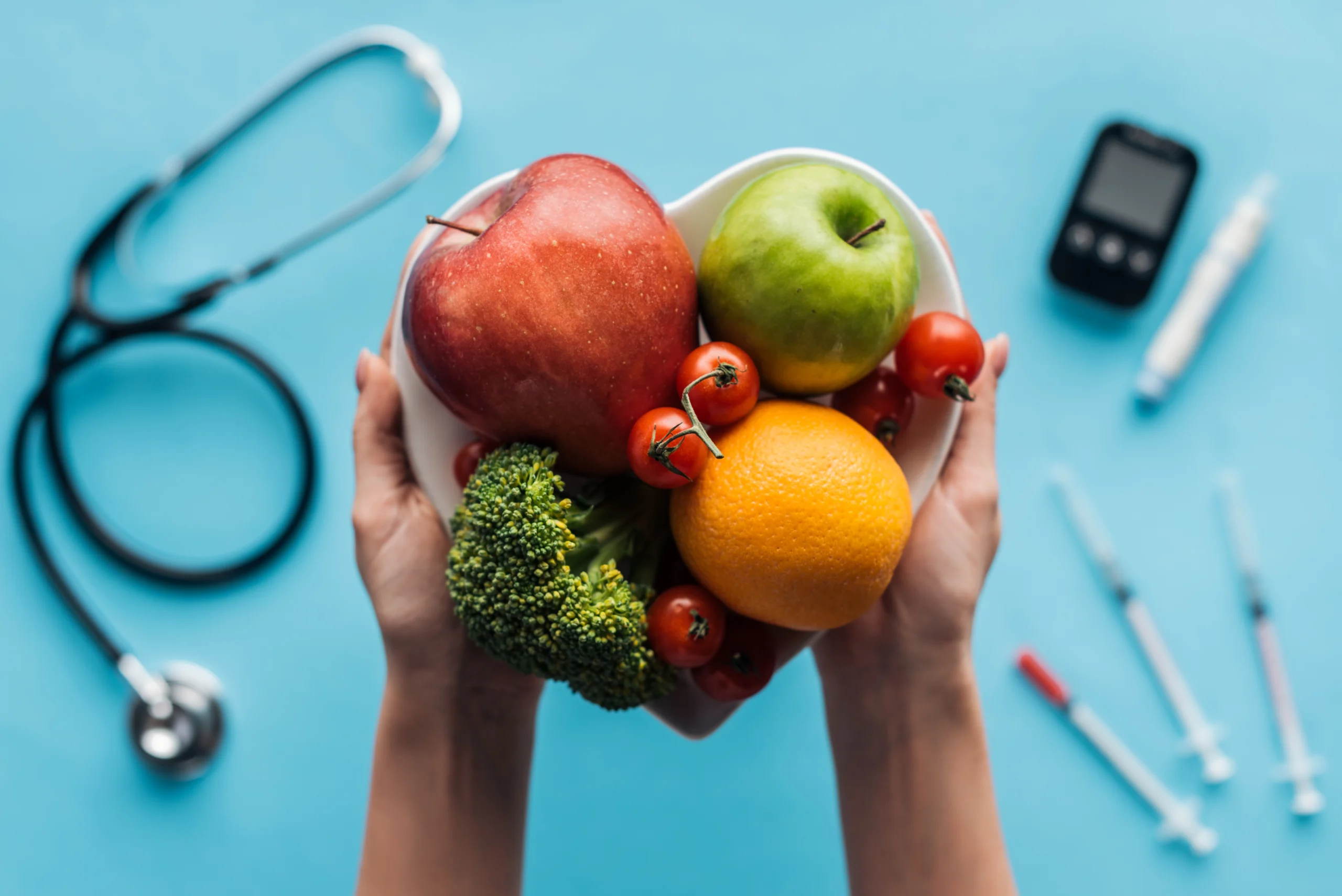Nutrition and T1D
There’s no such thing as a “diabetic diet.”

Getting tailored nutrition advice
How your diabetes care team can help
For years, people with type 1 diabetes (T1D) were told they needed to eat three meals and three snacks a day to keep their blood glucose levels from swinging too high or too low. Thankfully, with modern insulin analogues and regimens, you no longer need such a regimented diet. You can eat a little or a lot depending on what you feel like doing.
Your diabetes care team can help you tailor your insulin treatment around your lifestyle. To make sure you’re getting the correct amount of insulin, you will need to consider what and how much you eat, so you can match the glucose entering your bloodstream with the insulin dose you take.
Beginning to think about what is in your food and drink is often confusing at first, but your diabetes care team is there to help and it will become easier over time. It’s often recommended that you get tailored advice for your diet from a registered dietician. If you don’t have one already, ask your diabetes team to refer you.
You can eat sugar
Understanding what works for you
Like anyone, it’s important to ensure you’re eating a healthy diet, but living with T1D doesn’t mean you need to cut sugar out of your diet completely.
In fact, sugar can often be your friend when you’re having a hypoglycemic reading and need to boost your blood glucose levels.
Carb counting
An important part of managing T1D
Carb counting is an important part of managing your T1D. When you eat carbohydrates (both starches such as potatoes, rice and pasta and sugars such as fruit, milk, honey and table sugar), it’s broken down into glucose and absorbed into your bloodstream where it can be used for energy.
It’s important to have a good understanding of how much, and what type, of carbohydrate is in the foods you eat as this will help you work out how much insulin you need to give with meals and snacks.
Learn more tips on counting carbs.
Protein, fat and fibre
Impacts on insulin and blood-glucose
Fat can have an effect on your blood glucose levels. Fat delays the rate at which the stomach empties, which slows down the absorption of glucose from digestion. This might sound like a good thing, but a high fat diet is not usually a healthy diet. In fact, eating too much fat (particularly saturated or animal fat) can be harmful and increase your risk of obesity and heart disease. A high-fat meal can also make it more difficult for your insulin to work well, resulting in your blood-glucose level after your meal being higher than expected.
Fibre is a plant material that is not absorbed by your body. It helps keep your digestive system healthy and can improve control of your blood glucose and cholesterol levels. Following a high fibre diet (of vegetables, fruit, nuts, seeds and wholegrains) can also be helpful for weight management as high fibre foods help fill you up without providing you with excess energy.
Altering doses per meal
Insulin-to-carb ratio
If you would like more freedom with your diet, your diabetes team will probably suggest you use a number of units per exchange/portion or per grams of carbohydrate that you eat – this is often referred to as your ‘insulin-to-carb ratio’. This allows you to take a dose of rapid-acting or short-acting insulin to cover the expected rise in your blood-glucose level.
